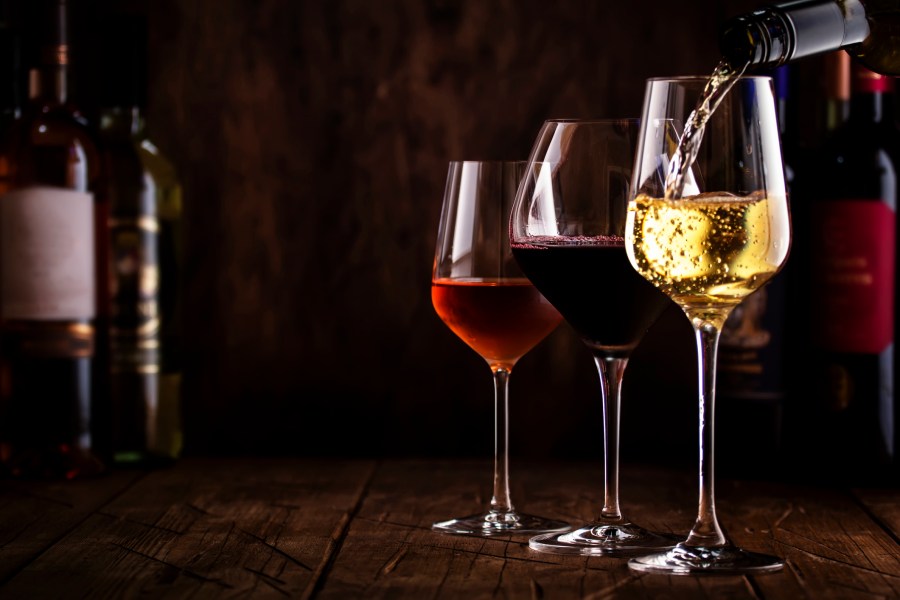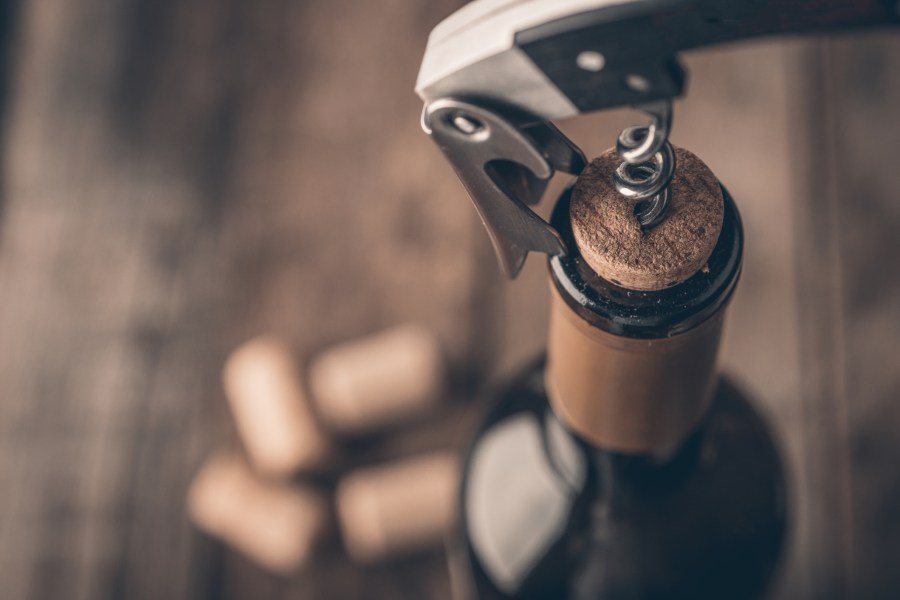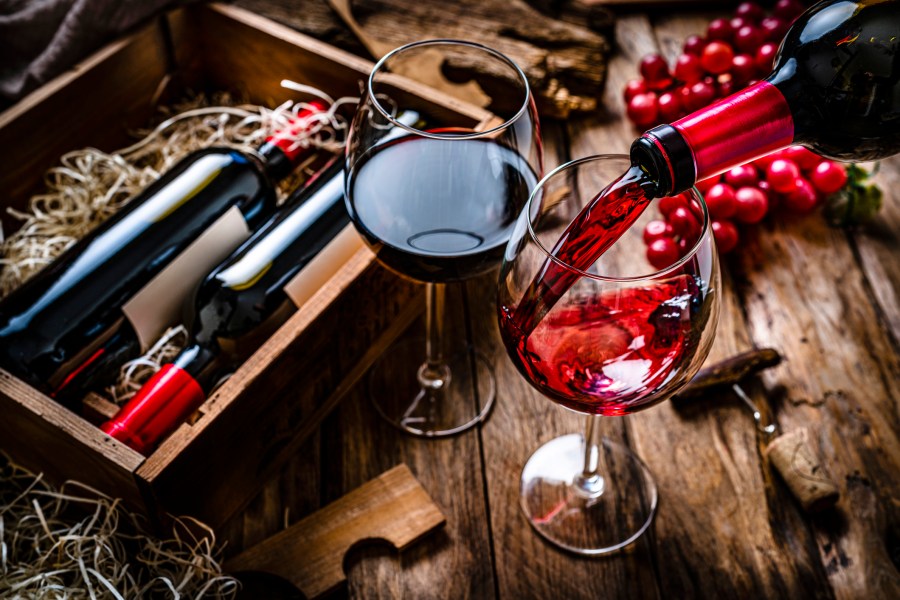Funny Way to Say New Glasses

How many glasses are in an average bottle of wine? Well, that depends on the amount of wine and the size of the glass. The standard wine bottle today holds around 750ml or 1.5 liters. This is the equivalent of five glasses of wine, give or take a glass depending on the size of the pour. However, a more interesting way to answer this question is to look at the history of the wine bottle.
Wine has been made and enjoyed for thousands of years, and wine storage methods have evolved right alongside it. In the early days of wine, bottles were much smaller than they are today. This was partly because the wine was made in smaller batches and partly because wine glasses were also much smaller. As wine production increased and wine glasses got bigger, so did wine bottles.
Nowadays, wine is produced on a much larger scale, and wine bottles come in all sorts of shapes and sizes. Read on to learn more about the history of wine bottles, as well as the vessels that came before them, and the ones presently emerging alongside them.
In the beginning: Clay Qvevri

The history of wine bottling dates back to 6000 BC, before the invention of the glass. In Georgia, the popular Qvevri winemaking technique was widespread. The Georgians utilized earthenware vessels known as Qvevri to manufacture, ferment, and store wine. These vessels were coated with beeswax which delayed oxidation and prevented crack formation.
The Qvevri is a clay container with a broad base and a tiny top that is shaped like an egg. To extract grape must for winemaking, the Gregorian wine masters traditionally used a wooden wine press. They then poured the must into the Qvevri and filled it to a three-quarter capacity. After that, they buried the vases leaving only the rim above ground. Once the wine was ready, the Gregorians would temporarily move it to a smaller Qvevris for aging. This practice led to the production of wine with a tannin taste.
Although the practice seems to have been discontinued years ago, a few Italian and Georgian winemaking artists still embrace it. In fact, the Qvevri winemaking process is presently listed as one of the culinary traditions recognized by UNESCO.

Wine storage soon transitioned from clay to wood through the use of wooden barrels. Wooden barrels are believed to have been invented by the Celts. After interacting with the Gauls during the Iron Age, the Romans discovered their concept of storing beer in barrels and adopted the practice.
In the process, the Romans realized that each type of wood significantly contributes to wine maturity in terms of tannins and flavor. Traditionally, most barrels were made of oak wood, owing to its light properties. To date, oak is still the wood of choice as it contains a mix of chemical compounds that contribute to the toasty aroma of the wine.
The wooden barrels were an iteration of the then existing haustrum buckets. Winemakers in France removed the handles from the haustrum buckets creating an open barrel. The barrels did not have a lid during fermentation. This was to prevent the barrel from exploding due to the build-up of carbon dioxide during fermentation. After the wine matured, the wine masters would place a lid on the barrel and nail it shut.
Today, some winemakers still use wooden barrels for the storage of wine, due to their convenience in storing large quantities of wine. Additionally, you can easily roll a filled barrel to its storage point. A standard wine barrel can hold about 225 liters of wine, which is 750 glasses of wine on a standard pour.
Glass Blowing and Bottles Evolve

In the 17th century, wine storage soon transitioned from wood to glass storage. The introduction of the coal furnace significantly paved the way for glass manufacture. Notably, wine barrels were still commonly used for storage, but the wine was later transferred to the glass bottles for sale to consumers.
Wine connoisseurs attribute the first wine bottle to Sir Kenelm Digby, who is believed to be "the father of the modern bottle." Initially, the bottles had a pear shape with short necks and fat bottoms. Over time, the bottle's design evolved to slimmer shapes. It wasn't until the 1820s that wine bottles started to resemble the modern shapes we have today.
Crazy for Corks

Wine corks were popularized shortly after glass wine bottles hit the scene. Prior to the invention of wine corks, winemakers would seal wine using glass. However, glass corks soon became obsolete because they would often break during opening or re-sealing.
Wooden wine bottle corks are still in use today and are made from Quercus suber, a type of oak tree. The tree's bark is harvested for cork production after it attains the maturity age of 15 to 25 years. After a harvest, the bark regrows in preparation for the next harvest. The tree is commonly found in Spain, Portugal, North Africa, France and Italy.
Modern Vessels: Boxes and Cans

Commercial wine-making is now experimenting with various ways of packaging wine for sale to consumers. Common types of storage packs you can find are wine pouches, plastic bottles, metal cans and bag-in-a-box containers.
Most wine bottles use opaque glass bottles, which block the UV rays from the sun, while others opt for clear ones for visibility. Nevertheless, glass bottles are a suitable option if you plan to keep your wine for a longer period of time. The glass bottles aid in the aging of wine as long as it's properly corked.
How Many Glasses of Wine Are in a Bottle?

Typically, a standard 750 ml wine bottle will hold approximately five glasses. However, the serving varies with the type of wine and the alcohol content. For instance, in Australia, winemakers declare the number of servings based on the alcohol content of the wine.
A bottle of Shiraz with 15% ABV (alcohol by volume) will have 8.9 servings. On the other hand, a bottle of German Riesling will have 4.7 servings since it has 8% ABV. This explains why restaurants offer different wine servings depending on the type of wine you ask for. Wine bottles with a high alcohol content will have a small serving and vice versa.
Source: https://www.reference.com/world-view/many-glasses-wine-bottle-caaa86a0f5cbe590?utm_content=params%3Ao%3D740005%26ad%3DdirN%26qo%3DserpIndex
0 Response to "Funny Way to Say New Glasses"
Enregistrer un commentaire